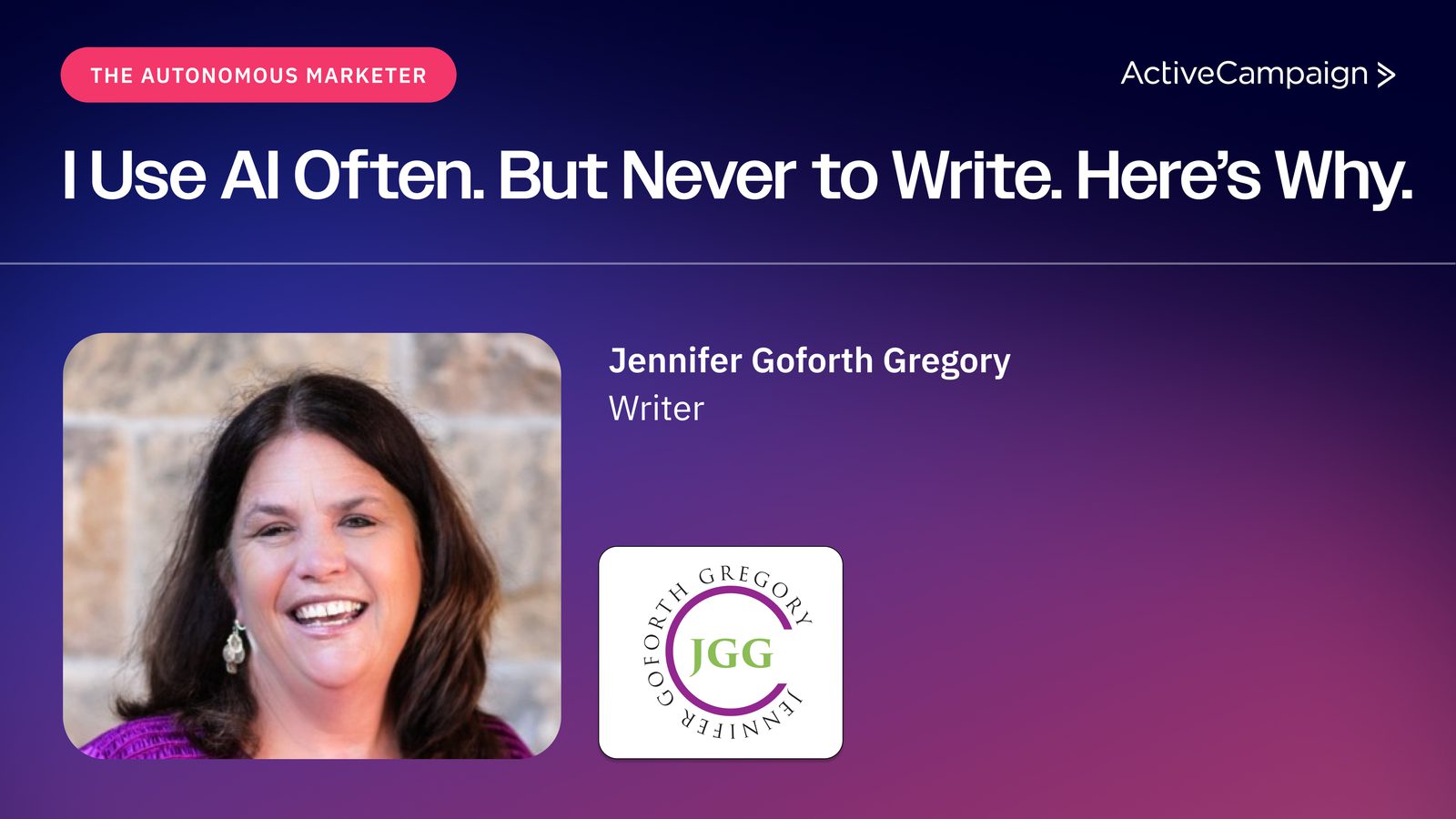A good email blast can be the difference between winning and losing customers.
Today, the world is dominated by social media, digital advertising, and influencer marketing. Each of these has its rightful place in your marketing strategy. But what about email blasts? Are they outdated?
Research shows that in 2022, more than half the world's population (over 4.2 billion people) were active email users. That number is projected to reach over 4.7 billion by the end of 2026.
This is precisely why so many companies around the world have leaned into email marketing. It's fruitful. The world of email campaigns isn't going anywhere and email blasts (with powerful subject lines) are just as effective of a tactic as they've ever been. In fact, according to the same study, data shows that by 2026, the projected number of annual emails sent will reach 392 billion emails.
There's a lot of noise and it will only get noisier. Many companies today do use email blasting as a tactic but are failing to use it in an impactful way that will drive actual engagement and revenue.
Some of the ways marketers are incorrectly email blasting could include:
- Sending an email to a huge volume of random, unsubscribed people without warning or purpose
- Sending an email to your subscriber list just because you haven’t sent an email in a while
- (And most commonly) Sending messages that don’t resonate – so that you lose subscribers/purchases and never even realize it
That's almost as bad as your email going to the spam folder. The good news is that your email blast does NOT have to have this fate (and after reading this, it won’t). In this article, we'll talk about the background behind email blasts, tips on how to elevate your email blast from okay to amazing, a few great email blast examples, and the importance of targeting, segmentation, and automation.
This article is part of our Perfect Email series. Click here for a complete guide on how to write an email, templates for different types, and formatting tips to boost your engagement.
What is an email blast?
An “email blast” is a single email message that gets sent to a large email list all at once. They can be scheduled to go out on a specific date and time, but the schedule is the same for everyone. Email blasts can also be called broadcast emails, bulk emails, mass emails, and eblasts (a bit outdated but still occasionally used).
No matter what you call it, the typical reaction to these types of emails is a scowl and “ugh, no those are terrible.” Why? Because sending a mass email is kind of like screaming at everyone through a megaphone. At the same time… megaphones exist for a reason. Sometimes a loud and clear message is exactly what you need to get your point across. Take Venmo for example.

When Venmo came out with Venmo cards, it was an announcement for the whole Venmo world – not just women, millennials, or any specific group. They sent an email blast to all of their customers in order to reach the widest possible audience and let them know of their new offering. This was definitely the right choice for the type of announcement they needed to make.
Email blast vs email campaign
So, what's the difference between an email blast and an email campaign? They're related, right? Yes and no. While both email blasts and email campaigns are integral parts of digital marketing, they serve distinctly different purposes.
An email blast is like a one-time, mass message sent to a large group of email subscribers (usually your entire email list). It's a quick and efficient way to distribute time-sensitive information, send out a promotional email for a limited-time offer, or share breaking news with a broad audience. Think of it as a digital megaphone, amplifying your message to reach as many inboxes as possible in a short span of time.
An email campaign is a more strategic, long-term approach. It involves a series of targeted and personalized emails sent to a specific audience over a period, often with the goal of nurturing leads, building relationships, or guiding subscribers through a sales funnel. Unlike email blasts, campaigns focus on engaging recipients with relevant content, providing product launch information, fostering relationships, and encouraging specific actions at different stages of the customer journey.
Successful email blasts create instant buzz with an entire audience while email campaigns nurture relationships and drive meaningful, ongoing interactions with subscribers.
Don't get it wrong though, an email blast is not your enemy. Here’s the key – your email blasts should supplement your targeted content emails. They shouldn’t be the only emails you send.
Your email marketing strategy probably already has some automated triggered emails set up to pull your target audience further into the funnel. These triggers usually include:
- Getting a confirmation email if they make a purchase
- An abandoned cart reminder email if they bail on a cart
- Receiving a welcome email series when they sign up for a list
These triggered emails are usually part of your overall email marketing campaign and are set up using email marketing software like ActiveCampaign. These emails serve a purpose and should be complemented by email blast campaigns like big announcements (new products or company updates) and newsletters (containing useful information like blogs, monthly digests, and quick tips and tricks).
Let's take a look at seven different best practices you should keep in mind to send effective email blasts.
Email blast best practices: Create unforgettable emails
Emails are one of the best (and cheapest) ways to reach your contacts but they only work if you do them well. There are seven things you need to keep in mind to create a successful blast email that doesn’t get marked as spam.
Use the words your customers use
Here’s the thing: it’s not about you, it’s always about your customers. Way too many blasts use messaging like “we did this, we did that” or (somehow worse) “since the dawn of time, businesses have…”
Every email should be focused on what benefits you’re giving to people not on why you’re awesome. Two great ways to do this are:
- Do your research to understand the way your audience communicates and the language they relate to
- Say “you” instead of “we” or “our”
Talk like a human, it's that easy! Do you like to be spoken to with lots of convoluted and multifarious articulation and jargon? Probably not. Don’t try to find language that sounds important or thoughtful. Don't send a generic email. Use the words your customers use and incorporate points they'll connect with.
Review mining is a great way to do this. Look up online reviews and check transcripts of customer calls to see exactly what your customers are saying about you. Copywriting wizard Joanna Wiebe wrote this landing page headline copy after she mined hundreds of Amazon book reviews related to her client’s business. And guess what happened?
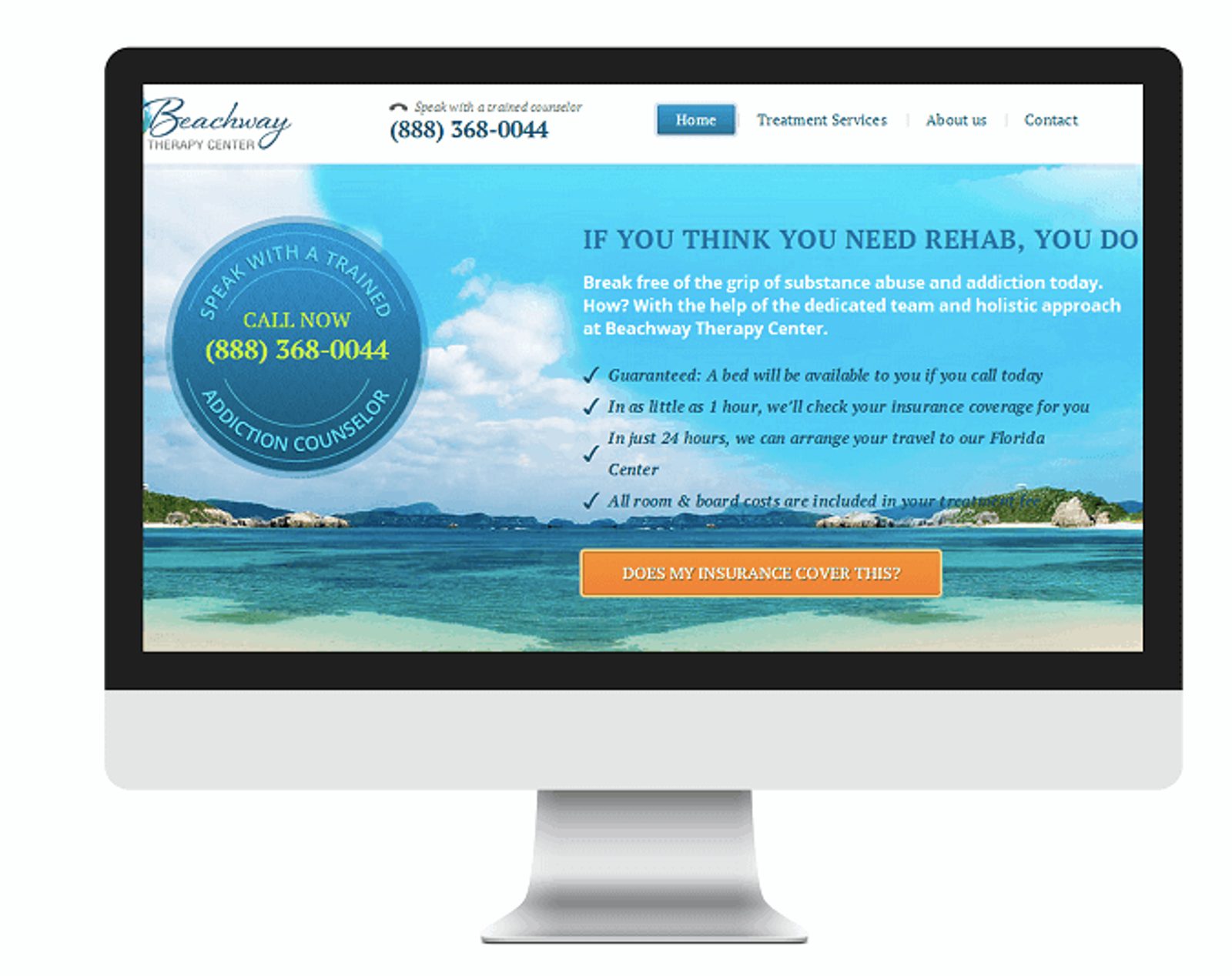
Copy developed from audience language blew the old copy out of the water. Don’t speak for your customers, let them speak for you.
Triple-check that your email blasts are legal
Note: This does not constitute legal advice. If you’re worried about this, talk to your own lawyer.
The law should always come first because non-compliance can cost you and get your emails blocklisted. Here’s a fun fact to scare the crap out of you:
Each separate email that is in violation of the CAN-SPAM Act is subject to penalties of up to $41,484.
To offer some perspective on that figure, According to U.S. Census data, the median household income for a family of four is $57,652. That’s for four people, not too far off the cost of just one measly non-compliant email. Imagine paying that amount for multiple emails that didn’t take simple steps to be legal.
No, really, burn this image into your memory.
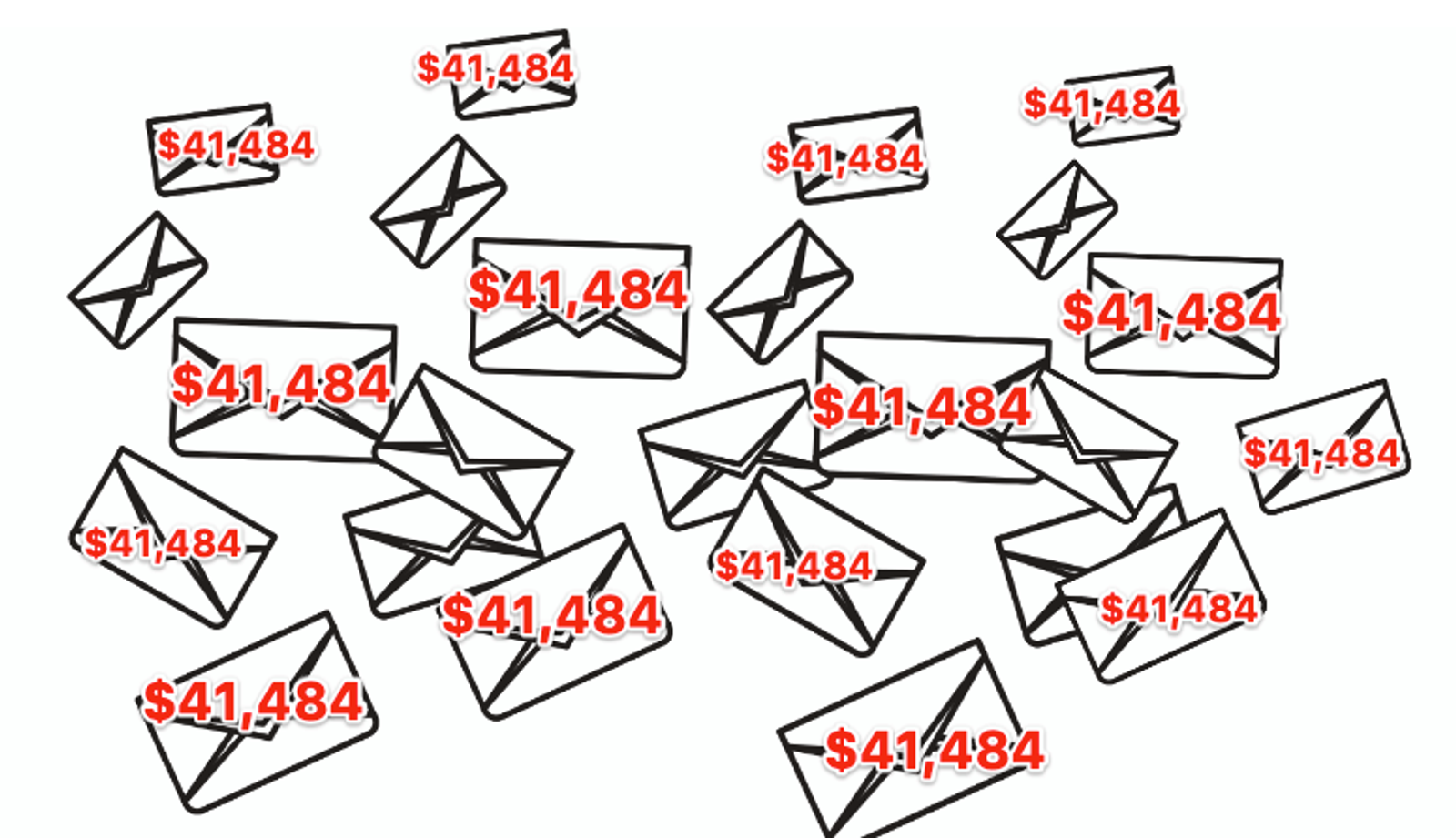
All email blasts are required to follow the CAN-SPAM Act. But the good news is that following the law isn’t complicated.
What does your email blast need to be legal?
- A clear way to opt-out: Don’t make this hard. Unsubscribes are not the end of the world, and your email contacts will find a way to leave if they want to. Give people a clear action button to unsubscribe.
- Permission: Only send to opted-in subscribers. This mistake can cost you big. Not just in fines, but in subscribers (more on this in a second).
- An honest email subject line: Your subject line needs to be clear about what to expect from the email. Don’t exaggerate claims for a click. Plus, try using personalized emails to connect with each individual customer.
- Who the heck you are: Your header info should plainly spell out who the email is coming from.
Basically, be as transparent as you possibly can, and remember that using an email service provider (ESP) to send your messages doesn’t make you any less liable.
Regularly clean your email list
As you continue to track your email metrics, you'll be concerned if they start to look like this:
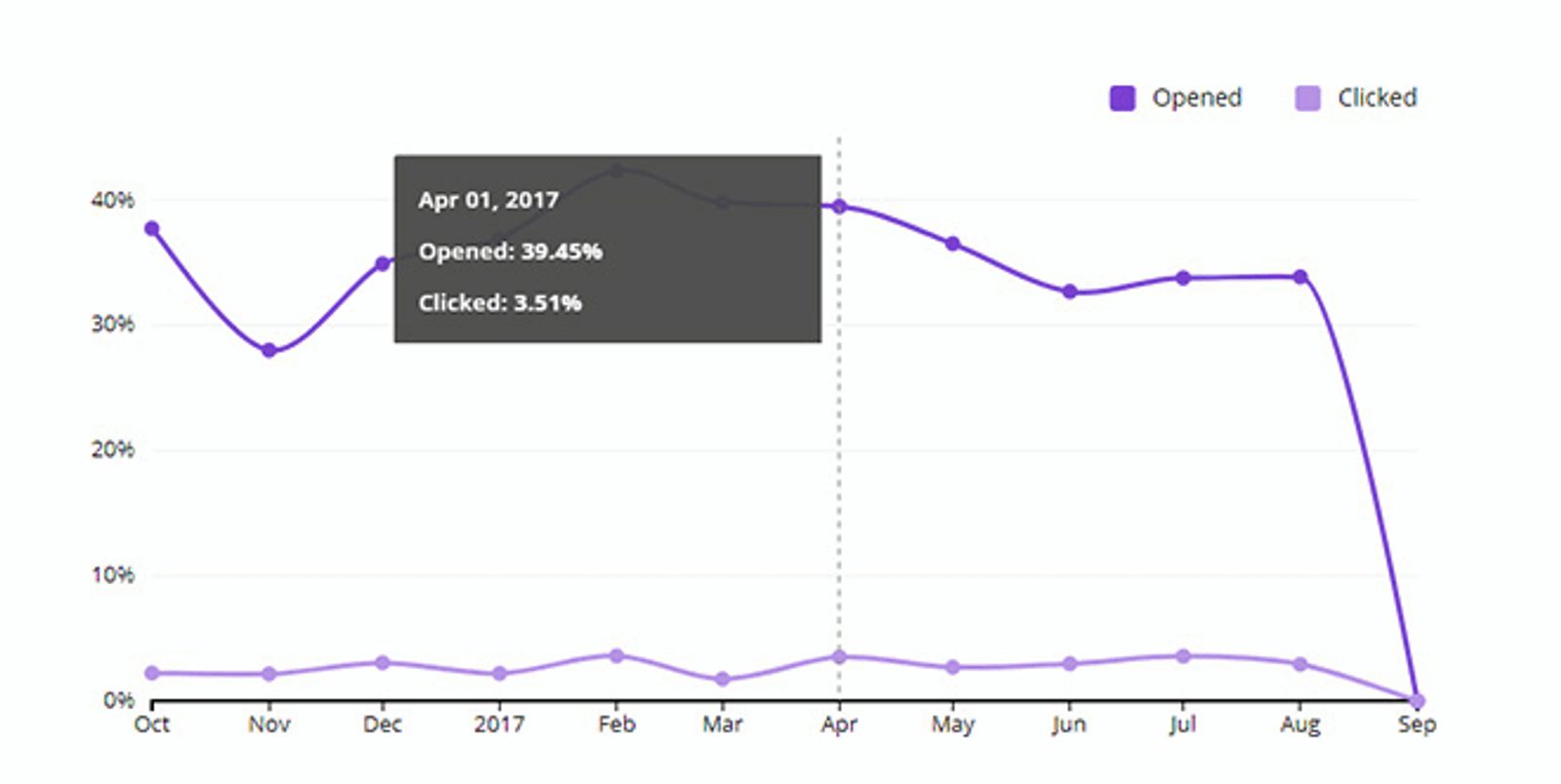
Email marketing is cheap, so it’s easy for bulk email senders to just email their whole list over and over. It’s true – the financial cost is minimal, but there is still a cost to this kind of laziness. Poor practices can land you on an email blacklist, and when your deliverability takes a hit, so will the revenue from lost conversions.
To avoid this, clean your list regularly. That's to say, clean your list after you’ve tried a re-engagement email sequence to win their clicks back. Wait, what's a re-engagement sequence?
A re-engagement campaign is a sequence of emails sent to past customers to “win them back” after they have stopped interacting with a brand over a certain length of time (such as 30-60 days after their last interaction).
Click here to learn how to write powerful re-engagement email subject lines.
Don’t remove people from your list just because they don’t respond to your win-back campaign right away. Give them a little time. But if they do stay quiet, don’t stress. Remove the unengaged people before your well-intentioned eblast sends them to the spam flagging button.
List cleaning is good for everyone – it makes room for people ready to be connected with you, and it improves your deliverability and open rates over the long term. What’s the best process for cleaning your email list? Take a look at how some of our ActiveCampaign customers do it.


7 days. 30/60/90 days. 7 emails. 3 emails. Different strokes for different folks. But to give you some inspiration on where to start list cleaning for you, here are a couple of suggestions:
- Try segmenting your emails. It may not be a case of not wanting any of your emails – just not certain ones. We'll get into this later.
- Find out why they’re inactive. When you give your contacts a way to unsubscribe after a long period of inactivity, give them a one-click survey on your unsubscribe page to find out why they’re leaving. Use the information to keep the next contact from leaving.
Measure your email results
You can follow helpful tips and best practices, but measuring your personal email blast metrics is the only way to know if they are working for you. These metrics can have a big effect on email deliverability on the whole so it's important to pay attention to them on a consistent basis.
Email metrics you should pay attention to:
- Open rates: How many people actually opened your email
- Click-through rates: On the CTAs in your message
- Hard bounces: Email that is undelivered because of a bad address (AKA it’s time to clean that list)
- Conversion rates: How many people buy from you after getting your emails
- Unsubscribe rates: How many people leave your list of subscribers
Each of these metrics can tell you a specific insight (and potential improvement opportunity) about your email blast.
The email open rate is the best metric to tell you how many qualified customers are on your list.
The click-through rate can tell you whether a CTA and email copy is effective.
A hard bounce can be a sign to clean your list and improve your deliverability.
Conversion rates can give you an idea of how well you use segmentation or how good your offer is.
Unsubscribe rates can give you hints at things that need changing. Unsubscribes happen, so trying to stop them completely is a waste of time. What you should pay attention to are spikes in unsubscribed.
The best way to make improvements in your emails is to know your audience and give them what they want. You can do this by engaging with them, sending out surveys, asking for feedback, and setting up a form they can use to suggest product updates or new services they'd like to see from your brand.
Avoid using attachments
Attachments look like a tiny, insignificant thumbnail in your email, so they shouldn’t be harmful right? It’s true, PDF attachments seem like a simple way to blast out relevant content to your audience. But before you click and drag an attachment into your next mass email, think again.
Did you know the number one delivery vehicle for malware is email attachments?
You might not mean any harm with attachments, but that doesn’t mean harm won’t come your way. Why shouldn’t you use attachments?
- Your emails get too big. When an attachment makes your message too big, it can cause performance issues for your campaigns (which increases the sending time, hurts your email deliverability, and could potentially set off the spam filter).
- Internet Service Providers (ISPs) can call it spam before your subscriber even gets it. No lie, a lot of email blasts can be spammy – and customers aren’t the only ones who notice. The risk of attachment-based email viruses can make your files look like a security threat to ISPs.
- A subscriber might still think it’s spam, even if ISPs don’t. Every time you send a new email blast, ask yourself “Would I open this?” An attachment from an unknown sender could be mistaken as a security threat. Any split second of hesitation about your email will likely cause a subscriber to hit the “spam” button and move on, never to hear from you again.
Want a non-spammy idea? Use links to your content and pages instead. Links also make it easier for marketers to track content engagement within the email.
Only send with permission
Sending emails to people who don’t opt-in is not cool. Period. Don’t do it.
The best way to make sure people won’t hate you for sending them email blasts? An above-board, straightforward way to collect email addresses. So what are the best ways to let people opt in to your list? We wrote about 15 different ways to collect emails.
These are a few of the top tactics:
- Offer a captivating lead magnet
- Optimize your form design and opt-in copy
- Ask people to share your emails
A lead magnet, also called an opt-in offer or “carrot,” is anything you give your audience in exchange for their email address. It’s one of the most tried-and-true list-building tactics out there. Lead magnet types include(but are not limited to) courses, downloadable PDFs, videos, and checklists.
How do you offer a lead magnet? With a well-done opt-in form. These can be in the form of a pop-up (which totally works) or a unique landing page. And no one wants to fill out a form with uninspiring copy and poor design.
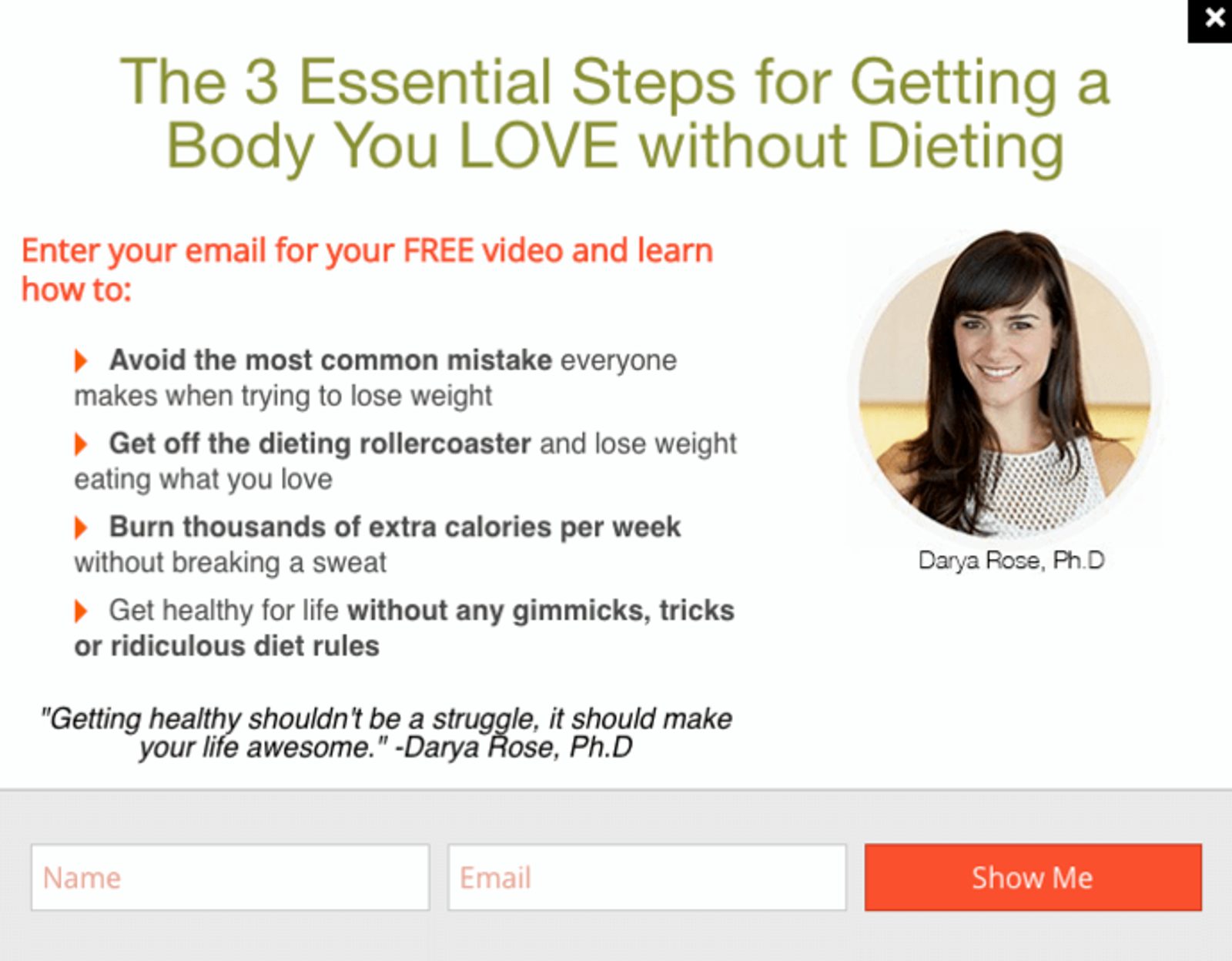
Check out this great example from Darya Rose of Summer Tomato. What makes this opt-in copy effective? It highlights a big benefit (a body you love without dieting) while still clearly telling you what you actually get by filling out the form (a free video to get you that diet-free body).
The copy also:
- Uses powerfully emotional language (“get off the dieting rollercoaster”)
- Adds credibility to her expertise (mentioning Darya’s PhD)
- Sounds easy! (just 3 steps, “getting healthy shouldn’t be a struggle”)
Darya plays up the benefits of her lead magnet. The features of the lead magnet are mentioned only briefly (the word “video”) but it’s enough to tell people what they’re getting.
Finally, ask people to share your email. That forward button is there to be used. When you create great email content, you want people to see it. All it takes is a simple line in your email: “If you’ve been enjoying this content, I’d really appreciate it if you could forward this email to someone you think it might help.” It’s really that simple. And people are more likely to spread the good word if you just ask.
Include a clear call to action
So you've gotten your email recipient to open one of your promotional email blasts. Unfortunately, that's not where the work ends. What are you asking them to do once you've grabbed their attention with your great subject line?
An effective call to action (CTA) is the entire point of an email blast. Imagine you're sent a piece of furniture with no instructions on how to assemble it. That's what your customers will go through if you don't include a relevant and compelling CTA.
A good call to action turns a curious reader into an active participant. It's a signpost that shows customers where they need to click to learn more, buy something, or stay updated. Essentially, it transforms a regular email into a valuable interaction, helping businesses achieve their goals while providing users with a seamless experience.
Without a good CTA, all your effort and planning will be for nothing so be sure to include a clear, well-worded call to action at the bottom of your email.
How to elevate simple email blasts with the help of advanced email marketing
Yes, an email blast can be effective email marketing but there are better ways to go past an email blast and send more advanced email campaigns. Three email marketing tactics can help you go far and they include:
- Targeting
- Segmentation
- Automation
Targeting
How do you know who to talk to? Targeted email marketing.
A Responsys survey showed that 34% of those surveyed have parted ways with brands because of poor, disruptive, or irrelevant marketing messages. That’s 34% that could have been saved with a good targeted email. Here’s what a good targeted email looks like, courtesy of Spotify.
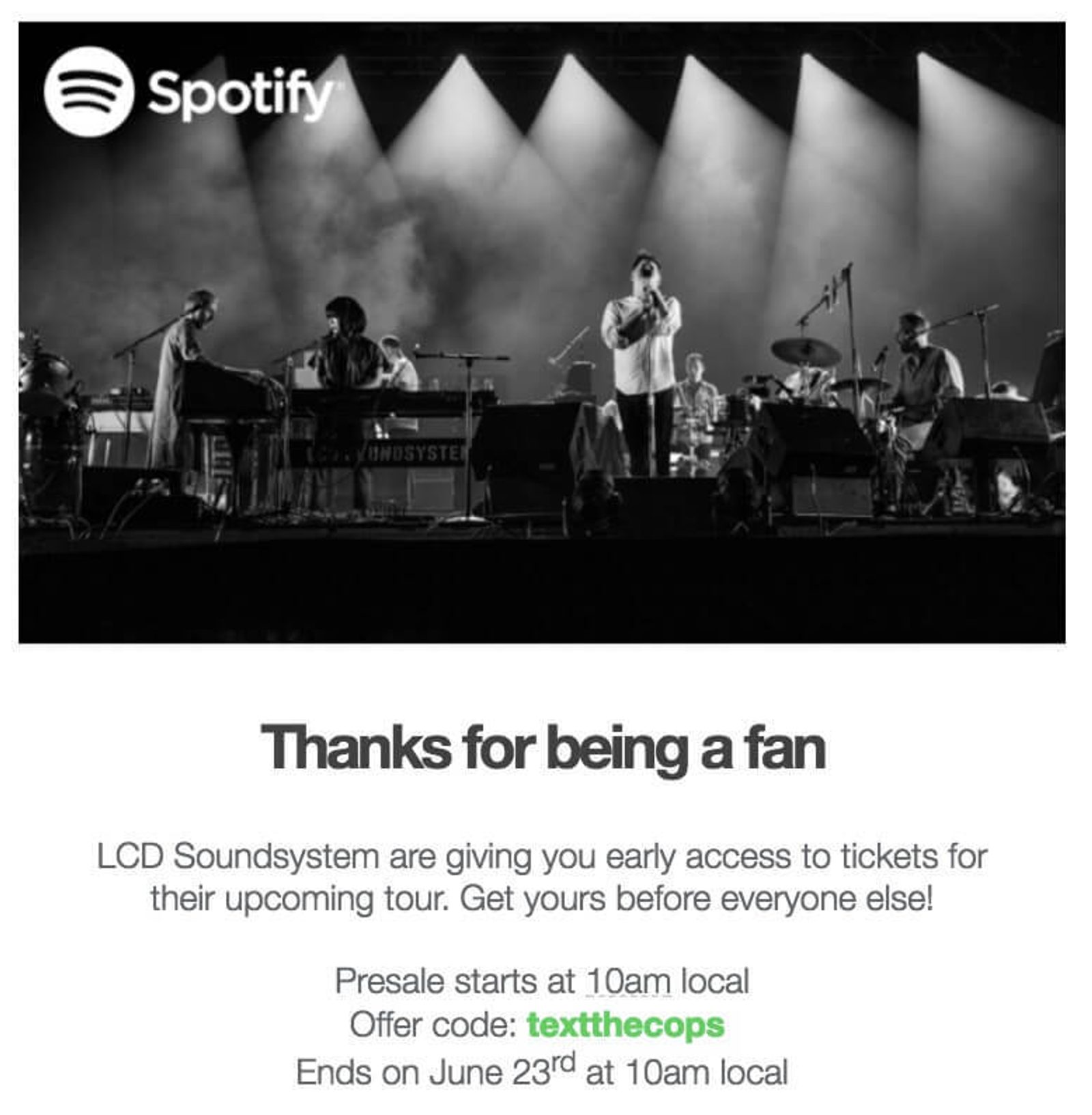
Spotify gets a lot of revenue from user subscriptions, but that’s not the only source. Revenue also comes from concert and merchandise sales. This email is behaviorally triggered because the user listens to a particular artist and gets an email based on their listening history.
An eMarketer study showed that the median email marketing ROI is 122%. That’s four times higher than any other digital marketing channel.
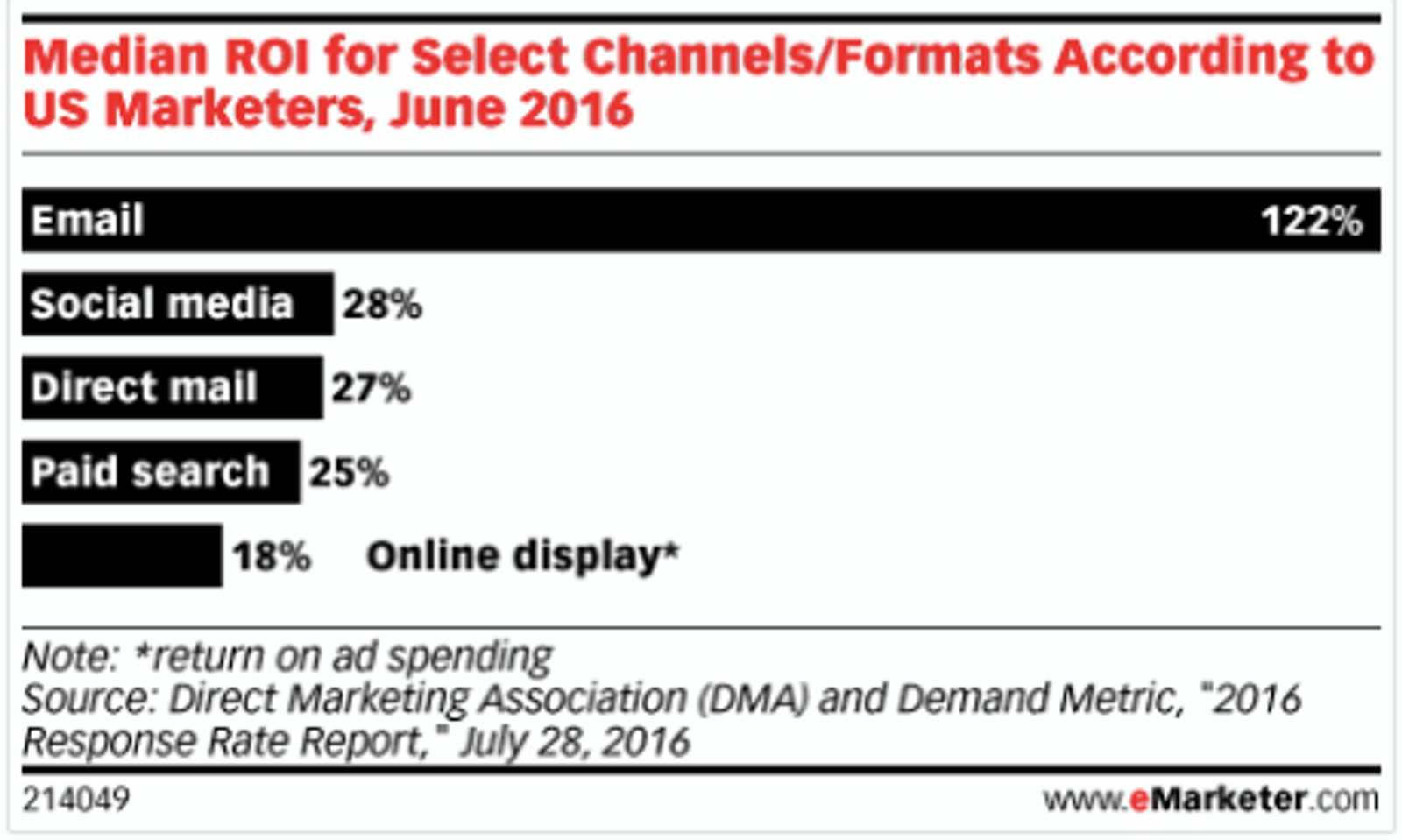
Using audience targeting when sending emails can help improve your overall email strategy's ROI. An email blast is meant for everyone but the most effective email campaigns you’ll ever send will be personalized and targeted based on what each person wants to see.
In ActiveCampaign, you're able to use your customer's specific data (say, their location or their interests) to target them with specific campaigns. Maybe you own a coffee shop. With a clear understanding of what each customer prefers, you can create highly targeted marketing campaigns and only send your customers content they'll be interested in.

Let's say you send out a form asking your customers what their favorite type of drink is. One customer fills it out and answers lattes. Because you know this, you can send them messaging, content, and offers (like a discount on lattes) only to them, increasing your chances of resonating with them and driving them to come in and buy a drink.
Segmentation
Did you know that segmented and targeted emails generate 58 % of all revenue?
Segmentation isn’t actually all that scary or complicated. Creating a segment of your audience is just you saying “This group of people have something in common, so I’m going to group them all together.” And it works really well for sending targeted content emails.
When you think about segmentation with email marketing, you think of targeted emails. Segmentation is sending specific content to specific people who want it. Say that you just had a flash sale that you promoted through a broadcast email that went to your entire customer base. After all, who wants to miss out on a sale (no matter their target age, gender, location, or another factor)?
You can segment your customers based on a number of things, like:
- Purchase behavior
- Site tracking (where they went after they clicked your email)
- Whether they opened or clicked your first email at all
It's as simple as that. ActiveCampaign makes it easy to segment your customers and ensure you're engaging with the right subsection of them. You'll be able to create a much closer bond with each customer by sending them content that's relevant and valuable to them.

ActiveCampaign makes it easy to engage with your customer base on a deeper level. Segmentation is the secret ingredient in doing so.
Automation
An “automation” is a chain of events that runs after a start trigger (which you define) and are created by combining triggers, actions, and logic to perform a specific task.
Have you ever wished that you had a personal robot that could just take care of the little things for you? Guess what – that’s what automations are for. 78% of marketers say automation increases revenue and 75% of brands using automation see ROI in under 12 months.
Here’s what they do:
- Save time on recurring tasks
- Give valuable insight into customer behavior
- Deliver personalized experiences at scale
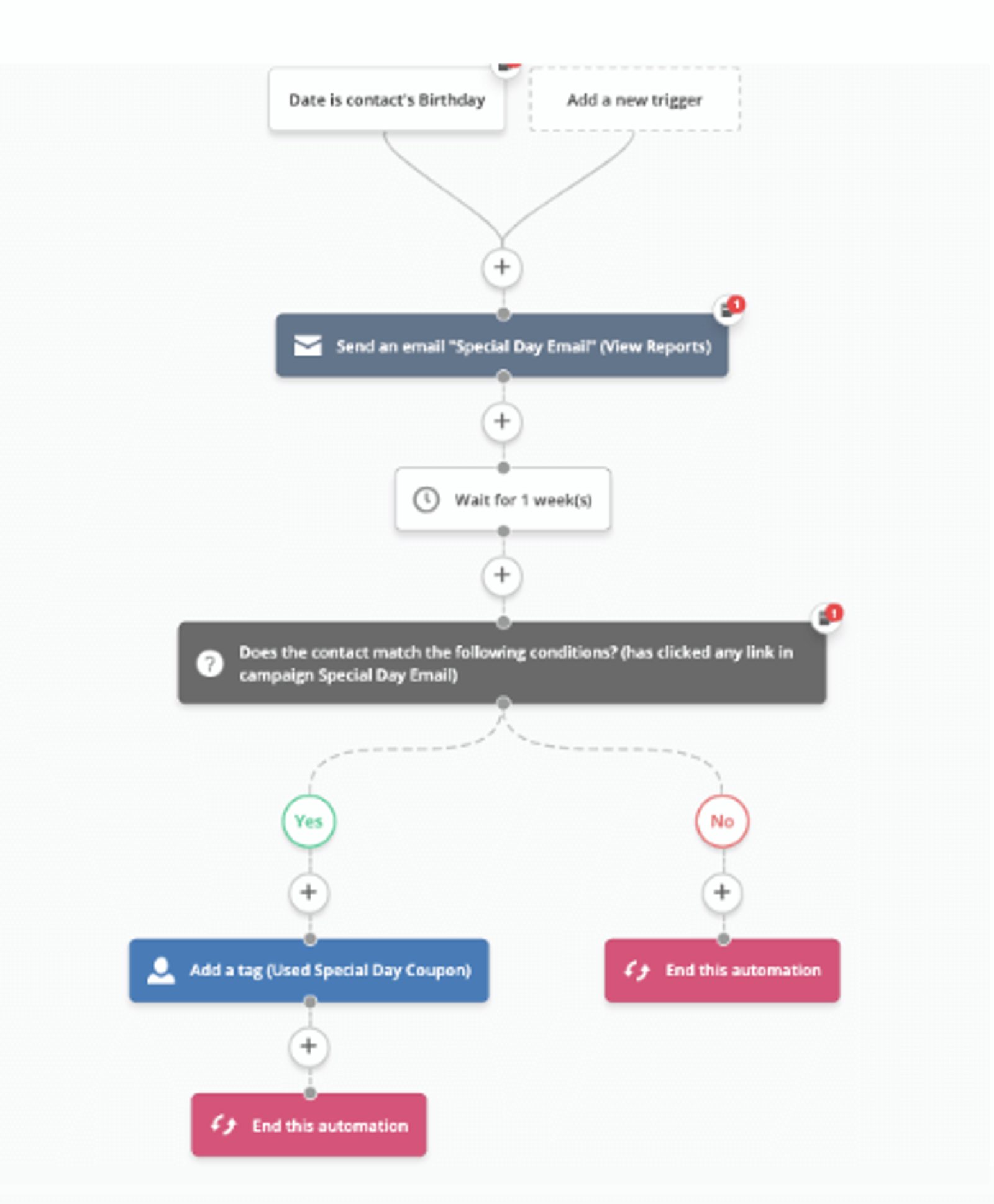
Automations are like hiring an extra set of hands that you don’t have to train or worry about. They work hard at making business processes easier for you. Here’s what a couple of ActiveCampaign reviewers have to say about them:
What I like most about is the ease and creation of automations within campaigns. It's intuitive and follows the flow of everyday logic.
(Source: Marketing Automation Insider)
My primary use of AC is to set up email automations to be sent to subscribers. I am able to save a lot of time, create beautifully functional emails with the templates provided and easily organize my contact list.
(Source: G2 Review)
Sending bulk emails is just one of the many things you can achieve with ActiveCampaign. This platform is designed for businesses looking for an all-in-one CRM, email marketing and automation system.
(Source: Venture Harbor)
Final thoughts on sending email blasts
Every marketer’s greatest fear is being blocklisted as spam. And yeah, an email blast sounds like the fast track to get there. But don't worry. With these tips, you can still send a mass email in a smart, impactful way.
Three last thoughts:
- Targeted emails are also great, so use both. Targeting and segmentation exist so that we can be better with email marketing. But does that mean email blasts are dead? No. We just need to stop calling them “blasts.”
- Don’t think of it as “blasting.” Remember all of those other terms? An email blast doesn’t have to be a mass email explosion dropped on unsuspecting inboxes whenever you feel like it. Think of it as a consistent, structured part of your marketing efforts. Email blasts, such as newsletters, aren’t just sent on a whim. Yes, they are sent to an entire list of people, but on a consistent monthly or weekly manner.
- Obey the golden rule of email marketing. Don’t send an email that you wouldn’t want to receive yourself.
Choosing an email marketing tool is a crucial step in any company's email strategy. If you're just getting started, take a look at the top email marketing software solutions on the market today for an in-depth look at each tool's features and functionality.
If you're not new to the email game and want to try ActiveCampaign and start using automation to send personalized, ultra-targeted emails, you can. Totally free.
Try us out by signing up for a trial in the box to the right →



